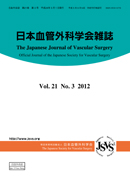Volume 17, Issue 2
Displaying 1-14 of 14 articles from this issue
- |<
- <
- 1
- >
- >|
-
2008Volume 17Issue 2 Pages 59-63
Published: March 25, 2008
Released on J-STAGE: April 09, 2008
Download PDF (271K)
-
2008Volume 17Issue 2 Pages 67
Published: March 25, 2008
Released on J-STAGE: April 09, 2008
Download PDF (165K)
-
2008Volume 17Issue 2 Pages 145
Published: March 25, 2008
Released on J-STAGE: April 09, 2008
Download PDF (481K) -
2008Volume 17Issue 2 Pages 146-152
Published: March 25, 2008
Released on J-STAGE: April 09, 2008
Download PDF (541K) -
2008Volume 17Issue 2 Pages 153-155
Published: March 25, 2008
Released on J-STAGE: April 09, 2008
Download PDF (467K) -
2008Volume 17Issue 2 Pages 156-165
Published: March 25, 2008
Released on J-STAGE: April 09, 2008
Download PDF (513K) -
2008Volume 17Issue 2 Pages 166
Published: March 25, 2008
Released on J-STAGE: April 09, 2008
Download PDF (503K) -
2008Volume 17Issue 2 Pages 169-187
Published: March 25, 2008
Released on J-STAGE: April 09, 2008
Download PDF (133K) -
2008Volume 17Issue 2 Pages 191-207
Published: March 25, 2008
Released on J-STAGE: April 09, 2008
Download PDF (744K) -
2008Volume 17Issue 2 Pages 208-232
Published: March 25, 2008
Released on J-STAGE: April 09, 2008
Download PDF (841K) -
2008Volume 17Issue 2 Pages 235-252
Published: March 25, 2008
Released on J-STAGE: April 09, 2008
Download PDF (630K) -
2008Volume 17Issue 2 Pages 255-302
Published: March 25, 2008
Released on J-STAGE: April 09, 2008
Download PDF (1043K) -
2008Volume 17Issue 2 Pages 305-376
Published: March 25, 2008
Released on J-STAGE: April 09, 2008
Download PDF (1202K) -
2008Volume 17Issue 2 Pages 379-431
Published: March 25, 2008
Released on J-STAGE: April 09, 2008
Download PDF (1008K)
- |<
- <
- 1
- >
- >|
